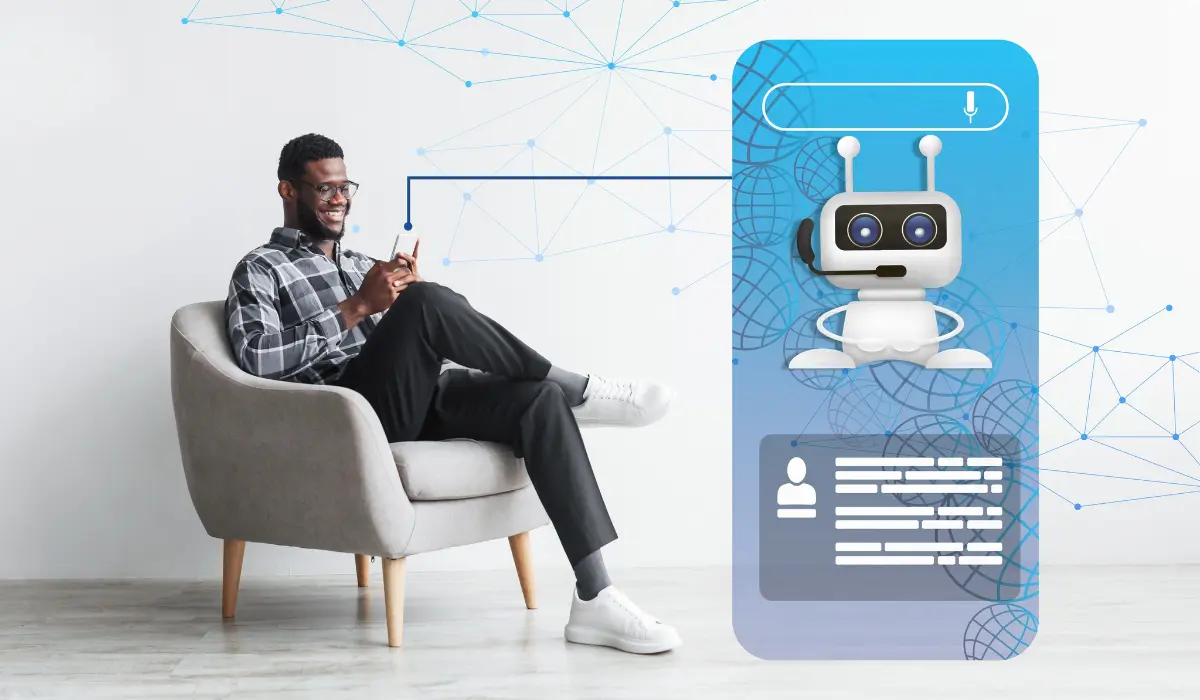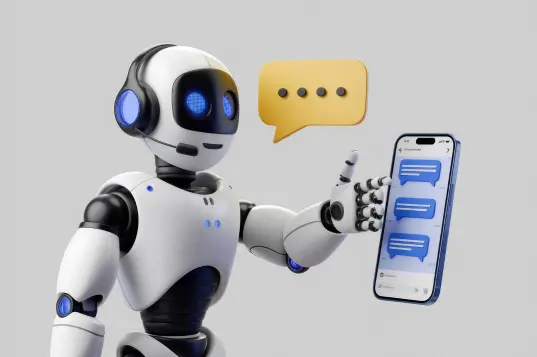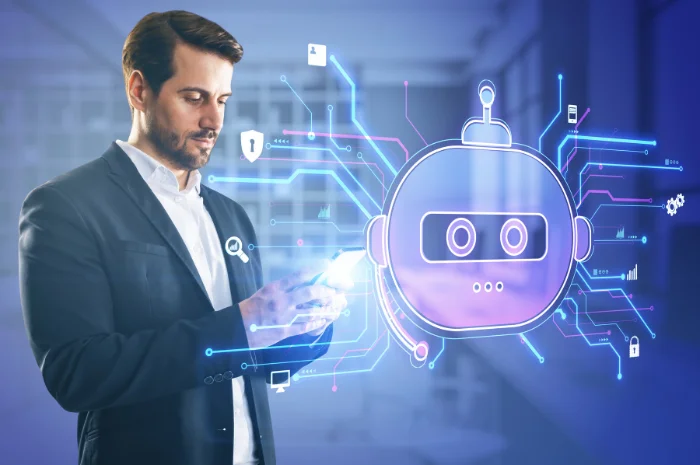In today’s digital-first world, customers demand fast, accurate, and context-aware responses from chatbots. However, traditional chatbots, though useful, often hit a wall when faced with queries that require specific, updated, or context-rich knowledge. They rely heavily on pre-trained data, which makes them prone to forgetting previous interactions or delivering vague, outdated answers.
That is where Retrieval-Augmented Generation (RAG) comes into play- a ground breaking advancement that gives chatbots the ability to “look things up” in real time and generate human-like, informed replies.
What Is Retrieval-Augmented Generation (RAG)?
 Retrieval-Augmented Generation (RAG) is a hybrid AI framework that boosts the capabilities of large language models (LLMs) by combining them with a document retrieval mechanism. It brings together two key components:
Retrieval-Augmented Generation (RAG) is a hybrid AI framework that boosts the capabilities of large language models (LLMs) by combining them with a document retrieval mechanism. It brings together two key components:
- Retrieval: The process of searching external sources such as documents or databases to fetch the most relevant information.
- Generation: The use of an LLM, like GPT, to generate natural language responses based on both the retrieved data and the user’s input.
This approach empowers chatbots to access live data beyond their pre-training, making them more accurate, adaptable, and contextually aware.
Also Read: 7 Signs You Need an AI Chatbot Development Company
How Does the RAG Pipeline Work?
 A RAG pipeline involves several key stages that work together to retrieve the right information and generate a personalized response:
A RAG pipeline involves several key stages that work together to retrieve the right information and generate a personalized response:
1. Knowledge Base Setup
All the source content that a chatbot might need, such as FAQs, manuals, knowledge base articles, chat logs, support tickets, and product data, is first compiled into a structured or unstructured format. This becomes the foundation of the chatbot’s “memory.”
2. Embedding and Indexing
The documents are then processed using an embedding model, which transforms the text into numerical vectors that capture the semantic meaning of the content. These vectors are stored in a vector database, enabling quick and efficient retrieval.
Popular embedding tools include:
- OpenAI’s text-embedding-ada-002
- Hugging Face’s Sentence Transformers
- Cohere and Google’s Universal Sentence Encoder
Vector stores like FAISS, Pinecone, Weaviate, and Chroma DB are used to index and store these embeddings efficiently.
3. Real-Time Query Handling
Upon receiving a question, the chatbot:
- Converts the query into an embedding vector
- Searches the vector database for documents with similar meanings
- Retrieves the top-N most relevant chunks
4. Generating the Response
The chatbot then feeds the retrieved information, along with the user’s original question, into a large language model (e.g., GPT-4, Claude, LLaMA) that formulates a clear, conversational response, grounded in real data.
5. Feedback and Improvement (Optional)
Some RAG systems include additional layers for:
- Re-ranking results to prioritize more accurate documents
- User feedback collection to improve future responses
- Session-based memory for personalization
Real-World Applications of RAG-Based Chatbots

RAG is already transforming chatbot performance across various industries:
Customer Support
Chatbots can retrieve real-time solutions from support documents and past tickets, delivering more accurate and personalized responses without human intervention.
Healthcare
Medical chatbots can reference scientific literature, treatment protocols, or patient data to provide doctors and patients with evidence-based suggestions.
E-commerce
Shoppers can ask detailed product-related questions, and the e-commerce chatbot can respond with specifics pulled from live inventory, user manuals, or reviews.
Legal Services
Chatbots can access and summarize complex legal documents, case studies, and contracts to support legal advisors or clients in real-time.
Education
Educational bots can refer to a dynamic curriculum, academic resources, or student records to help learners with precise answers.
Advantages of RAG in Chatbots
- Access to Updated Knowledge
Easily include new information without retraining the model, just update the document store.
- Reduced Hallucinations
Because the responses are based on retrieved information, the chatbot is less likely to generate inaccurate or fabricated details.
- Context-Aware Replies
Especially in multi-turn conversations, RAG helps maintain continuity and relevance.
- Domain-Specific Expertise
RAG allows chatbots to specialize in industries like finance, legal, healthcare, and more.
- Cost-Efficient Scalability
It removes the need for constant retraining or fine-tuning of models to add new knowledge.
How RAG Helps Chatbots “Remember”

One of the most common expectations users have from chatbots is memory, remembering who they are, what was discussed earlier, or past actions. While traditional chatbots struggle with this, RAG brings them closer to human-like memory through intelligent retrieval. Here is how:
Retrieval as Memory
RAG does not rely on a short-term memory buffer. Instead, it searches relevant documents, including past chats or user-specific data, and brings them into the current conversation. This gives an illusion of memory, even in stateless systems.
Session-Aware Interaction
By indexing past interactions and user profiles, RAG enables personalized follow-ups. For example: “Considering your previous purchase, here are some accessories you may be interested in.”
Consistent, Contextual Answers
If a user asks about a previous query or case ID, the chatbot can pull up historical data, delivering continuity and improving user satisfaction.
Conclusion: Power Smarter Conversations with RAG-Powered Chatbots
Retrieval-Augmented Generation is not just a trend; it is the future of intelligent conversational AI. By merging real-time knowledge retrieval with the natural fluency of language models, RAG empowers chatbots to deliver responses that are not only accurate but deeply contextual and personalized.
Whether you want to build a support bot that solves problems faster, an e-commerce assistant that knows your customer, or an enterprise chatbot that acts like a knowledge expert, RAG makes it possible.
Ready to Build an AI Chatbot That Remembers?
At Softude, we specialize in developing RAG-powered chatbots that are smart, scalable, and tailored to your business needs. Let us help you design a conversational assistant that truly understands and engages your users. Contact us today to get started!



